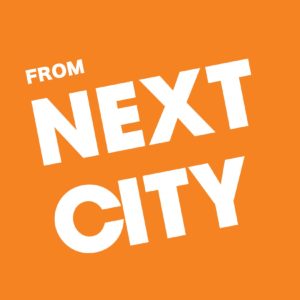With state funding possibly on the line, 27 agencies across the Bay Area are ironing out new strategies to coordinate fares, wayfinding and more.
By Henry Pan, Next City, May 6, 2022

[Next City Ed. note: This is the third in a series of three articles by Pan about city public transit systems and the benefits and obstacles of how they integrate with regional transit providers. The first two stories covered the Twin Cities and Sacramento.]
I hardly traveled outside of San Francisco on my own growing up.
My parents, working-class Chinese immigrants, managed to get a monthly San Francisco Muni pass for me so I could get to school. I used that pass on weekends to explore the city, but rarely ventured outside of the city limits.
One of the few times I did so was in high school on a sunny and warm Friday morning. My 17-year-old self paid $13 one way to travel 65 miles over three hours on four transit agencies to get to Western Railway Museum, a Solano County museum with historic rail vehicles from around California.
I would head over to the museum by transit again in a heartbeat if I still lived in the Bay Area. However, taking public transit over such a long distance might not even work for those who do live in the Bay Area because of how time-consuming, expensive, and confusing it can be.
All of this may change in the next several years, as 27 Bay Area transit agencies work to coordinate their fares, schedules, and wayfinding, and as the California legislature considers a bill to withhold their state funding if they don’t. And to fund it all, the MTC may request a ballot measure from the legislature, after abandoning an effort in 2020 for $100 billion because of the pandemic.
Although it has been a decades-long effort, cratering transit ridership heading into the pandemic — the Bay Area lost 27 million annual riders between 2017 and 2018 — makes it urgent.
“It really is about, in the most bold vision, having a harmonious system where the rider doesn’t really notice what system they’re on. It’s a Bay Area system, and it’s clear how you connect from A to B,” says Rebecca Long, who directs legislative affairs for the Metropolitan Transportation Commission, the Bay Area’s federal metropolitan planning organization.
Regional transit coordination is a fraught topic because every agency wants to have as many riders as possible, which translates into more funding. “There’s quite a lot of money at stake that agencies see as their own,” says Ian Griffiths, who runs Seamless Bay Area, an organization advocating for a unified regional transit system. “They see regional coordination as being potentially a risk to their ability to [collect] revenue.”
The regional transit coordination bill, if passed, requires free transfers between every agency, except to and from Muni’s cable cars. “Rather than having to worry about, ‘Should I take this mode, or this mode,’ [Getting from point] A to B should cost a fair amount, and it should be easy to understand, easy to pay, and there should be no surprises,” says Griffiths, whose organization supports implementing fares based on distance traveled.
To meet that provision, the MTC will revamp transfer discounts to riders using the regional fare payment card Clipper when the new version rolls out next year. Riders transferring from BART to any agency will only pay the difference in the connecting agency fare, while riders transferring from any agency to BART will pay BART fare, less the fare they already paid to the connecting agency.
“So let’s say the bus fare was $2.50, you’d be reducing that amount entirely from your trip in each direction,” Long says. “That’s a really big deal … and the operators have agreed to that.” Altogether, the change will cost agencies $30 million, with MTC footing part of the bill.
But until then, riders will have to utilize a mishmash of transfer discounts to get between different agencies, if they exist. Otherwise, California Sen. Josh Becker, D-San Mateo and the author of the bill, says that “people who are transferring between systems are still paying double, triple.” The MTC also partnered with most Bay Area transit agencies during the height of the pandemic to launch a discounted fare program for low-income adults.
Both fare and transfer discounts are only available on Clipper, itself a decades-long effort to make riding across multiple transit agencies seamless. It’s accepted on all except one transit agency: Dixon Readi-Ride in northeastern Solano county, who chose not to participate because of administrative costs and equipment compatibility.
 Wayfinding has been a decades-long issue, too. In the early 2000s, the agency built a regional trip planner, where riders could figure out what routes to take to get to where they needed to go. It was not perfect by any means; I remember planning trips from my childhood apartment in San Francisco’s Nob Hill to Stonestown, a mall located in the southwest corner of San Francisco, and the planner returned a trip result that would take an hour to complete, instead of a more direct route that takes about 45 minutes.
Wayfinding has been a decades-long issue, too. In the early 2000s, the agency built a regional trip planner, where riders could figure out what routes to take to get to where they needed to go. It was not perfect by any means; I remember planning trips from my childhood apartment in San Francisco’s Nob Hill to Stonestown, a mall located in the southwest corner of San Francisco, and the planner returned a trip result that would take an hour to complete, instead of a more direct route that takes about 45 minutes.
Today, many agencies provide transit schedule data to companies such as Montreal, Quebec-based Transit, who build navigation apps for people with computers and smartphones. But not every agency is able to provide such data to these companies, and not everyone can use the apps.
So the MTC is working to implement a consistent brand for maps and directional signage, which the bill also requires. They hope to work with a consultant starting this summer to deploy pilot wayfinding in the North and East Bays, which are home to many transit systems, in late 2024 or early 2025.
Although the MTC developed wayfinding standards now in place at BART and some Muni Metro stations, as well as major transit hubs such as Salesforce Transit Center in Downtown San Francisco, they coexist with other signage developed by individual transit agencies. “You still have all of the other very different operator-specific signage, maps, terminology, that creates a pretty confusing environment, especially for a new rider,” Long says.
In addition to signage, Golden Gate Transit, which connects Sonoma and Marin Counties with San Francisco and the East Bay, decided to renumber their routes, in part because some of their route numbers were numbered the same as other routes operated by other transit agencies, such as Muni.
“As San Francisco started to bring back routes to their system, we had a Golden Gate Transit Route 30 [which runs between Downtown San Francisco and San Rafael] operating a block apart from a Muni Route 30 [that runs between San Francisco’s 4th and King Caltrain station and the Marina District],” says Golden Gate Transit Planning Director Ron Downing. “We had a couple complaints from people that were using [a trip planner] and they weren’t sure which route 30 they needed to board in the Marina District.”
Before they could renumber any routes, however, they needed to ask neighboring Marin Transit, which Golden Gate Transit used to operate under contract until the late 2000s, to free up a series of numbers. After they secured the series, they implemented the renumbering in December 2021, one of which involved renumbering the 30 into the 130. “That’s different enough for the passenger to know it’s different [from] the Muni bus,” said Downing. The agency has not received any complaints about the renumbering, which was praised by neighboring agencies.
The agency also used this opportunity to renumber several other routes so riders could understand how far they can get from San Francisco based on how high the route is numbered, with some exceptions. But route changes they undertook over the years made it difficult to adhere to the numbering standards.
Aside from fares, mapping, and wayfinding, Bay Area transit agencies working across different disciplines have been getting together many times a week to talk about how they can better work together. One of the changes discussed is coordinating schedule changes so they all take place on the same day, perhaps in August and January.
A version of this article was originally published in Next City, May 6, 2022. Republished with permission.
 Henry Pan 潘嘉宏 (they/ them/ theirs) is a Minneapolis-based freelance journalist who reports primarily on transportation issues. Prior to 2017, Pan worked with several organizations now operating with Seamless Bay Area, which supports SB 917 (Becker), the Seamless Transit Transformation Act. They hold a bachelor’s in urban studies and planning from San Francisco State University.
Henry Pan 潘嘉宏 (they/ them/ theirs) is a Minneapolis-based freelance journalist who reports primarily on transportation issues. Prior to 2017, Pan worked with several organizations now operating with Seamless Bay Area, which supports SB 917 (Becker), the Seamless Transit Transformation Act. They hold a bachelor’s in urban studies and planning from San Francisco State University.

